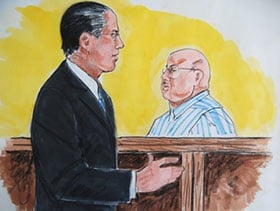While news stories play an obviously important role in our culture, they tend to gloss over many of the important details, to make things seem crystal clear when they are anything but.
One important example is loss amount, restitution, and forfeiture calculations in federal fraud cases.
A recent story
One recent example involves a story from the Wisconsin State Journal online, about the owner of two Illinois marketing firms who pled guilty of fraud charges. According to the story, two people were involved with overcharging Mercyhealth for marketing services rendered.
The potential problem is, the article doesn’t make clear how the parties or the Court calculated the losses purportedly involved. The story attributes $3.1 million as the total loss to Mercyhealth and $30,419 in tax losses from one of the defendants. Apparently, the IRS will argue that the other defendant owes almost $800,000.
Some factors of loss calculation
Stories like this make it seem like there is a certain clear amount that the alleged perpetrators profited from the charged crime; then determining penalties and restitution becomes a simple matter of tallying those costs.
This is only one example. Similar stories from almost any news source, as well as press releases from the Department of Justice often take a similar approach.
There is a lot more that goes into “loss” calculation in these cases than the news story would make it appear.
The United States Sentencing Commission references many of the factors that go into loss calculation for theft and fraud crimes under §2B1 of the advisory sentencing guidelines. Some of the nuances involved can include:
- Actual loss vs. intended loss: The greater of the actual or intended loss is generally used to calculate “loss” under the federal sentencing guidelines. No matter what calculation is used to determine the loss per the guidelines, the actual loss is important as it should factor into a judge’s determination of an appropriate sentence and any restitution or forfeiture, it should also be noted that the sentencing judge “need only make a reasonable estimate of the loss.” There is no requirement of absolute accuracy in these calculations.
- Loss can be broad: Although it may be surprising, loss can include not just the specific losses proximately caused by an alleged fraud in the charged offense or offense of conviction, but broadly includes all “charged, uncharged, and acquitted conduct and is not limited to losses directly attributable to the defendant.” This means that the losses of other victims than those named in the charges and reasonably foreseeable losses caused by co-conspirators can be included in loss calculations.
This is just a very high-level overview to illustrate the point that a lot more goes into loss calculations in federal fraud cases than suggested by the news stories we read online.
An example
In the case of United States vs. DA, as seen on my representative cases page, my client was charged with health care fraud that the government originally argued involved roughly $35 million in loss to the Medicare Program.
In that case, I explored the evidence and how the prosecutors were calculating loss. Ultimately, I convinced that government that a more appropriate measure of loss was approximately $1.8 million, rather than the initial $35 million, a difference of $33.2 million. This obviously also had a significant effect on the advisory sentencing guidelines faced when DA was sentenced. At the government’s original calculation, DA would have been facing an advisory sentence of decades in prison; however, at sentencing the government requested a sentenced of 4 years or 48 months and I convinced the Court to sentence DA to15 months where he served less than a year.
Clearly, the loss calculations can be read very broadly, and there is usually a lot of room to interpret or argue these calculations down; that can make a world of difference in calculating the advisory sentencing guideline range that usually drives a sentence, but also the amount of money owed for restitution purposes. For legal help defending against fraud or other major white collar crime charges, contact attorney Darryl A. Goldberg.


